There are bright red spiny starfish and huge bread starfish in the ocean; there are also beautiful shell-shaped sea urchins with purple-red bodies and beautiful patterns on their petal-like spines. Their spines are thick and vary greatly in color. Making cigarette holders, it is also called "cigarette holder sea urchin".

Brightly colored starfish
There is a kind of "plant" growing on the very deep seabed. Look at its tall "stem" with branches and branches, and at the top is a budding "flower". Because its shape is like a lily, people call it "Crinoids". Scientists have long stripped away the camouflage of crinoid, and it turns out that it is also a very ferocious animal like anemone. Crinoids are echinoderms and are close relatives of aquarium/sea-cucumbers.html">sea cucumbers.
The beautiful stalked crinoid is fixed in the deeper sea. Its outstretched arms are like windmills, catching food against the current, just like the terrestrial sunflowers. The sessile crinoid is also known as "sea fern". It can be both fixed and moved by the wrist. It is colorful and its swimming movements in the sea are like butterflies dancing in the sea. There is also the large, fleshy, red plum blossom ginseng. The spine-like protrusions on its body are like blossoming plum blossoms, which are bright and eye-catching.
starfish
Starfish are important members of echinoderms. The starfish with five arms is shaped like a five-pointed star. Its mouth is located on the oral surface (ventral surface), and the anus is on the anti-oral surface (back). The oral surface is light yellow or orange, and the anti-oral surface is light yellow or orange on a light background. Dark brown markings. The starfish lies on its belly, with its five arms stretched out, and crawls leisurely on the sand or rocks in the shallow sea using a large number of tube feet (the starfish's moving organs). Starfish have a very unique way of hunting, and they especially like to eat shellfish. When the starfish grasps the food with its wrists and tube feet, it does not bring it to the mouth to "eat", but turns the stomach out of the mouth, wraps the food for digestion, and then shrinks the stomach after the food is digested. Back into the body. When starfish eat shellfish, they need to add an additional step: first wrap the shellfish with their wrists and tube feet to suffocate them, pull the double shells apart, and then turn their stomachs out to devour them. Those shells that cannot be digested are discarded after the starfish has eaten its fill.
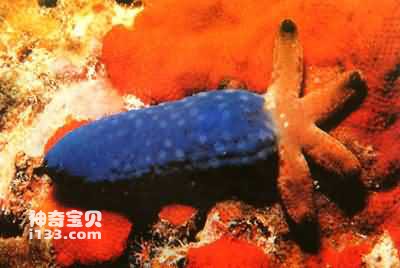
Reborn blue-fingered starfish
The starfish's unique skill is that it can be divided into two parts. If you tear a starfish into several pieces and throw them into the sea, each fragment will quickly grow back the lost parts, thus growing into several complete new starfish. For example, a sand starfish can grow a complete new starfish by retaining a 1-centimeter-long arm, while some starfish are more capable and can grow a complete new starfish with only a broken arm. Because starfish have such an amazing ability to regenerate, losing arms and limbs is a trivial matter to them. Currently, scientists are exploring the mysteries of starfish's regenerative abilities in order to draw inspiration from them and seek a new medical method for humans.
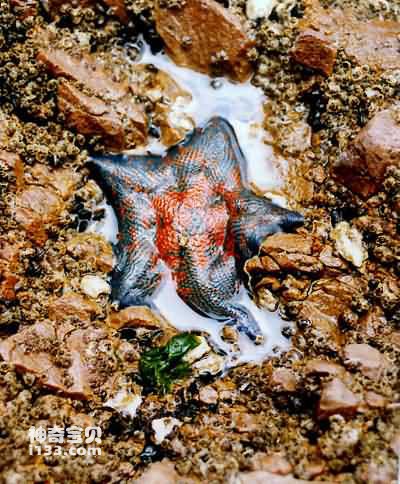
Haiyan
Haiyan
When it comes to petrels, everyone will naturally think of birds flying in the sky. Indeed, taxonomists refer to birds in the petrel family as petrels. But the petrel here does not refer to a bird flying in the sky, but an echinoderm of the sea star family Petrelidae. This echinoderm has a pentagonal body and relatively short arms, usually five. The oral plate is large and obvious, with two rows of blunt and flat spines. Petrels live on the bottom of rocks in the intertidal zone, sometimes on the bottom of sand or broken shells; they are carnivorous, feeding on molluscs, echinoderms, worms, etc. It is distributed in the Yellow Sea and Bohai Sea in my country and can be used for medicinal purposes. The petrel in the picture was taken on the beach of Qingdao.
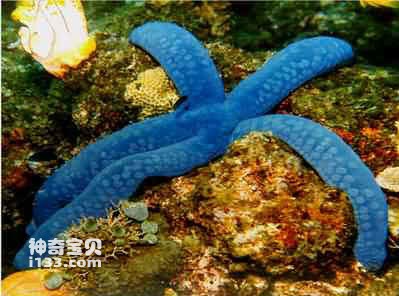
blue finger starfish
blue finger starfish
Starfish are important members of echinoderms. The five-armed starfish is shaped like a five-pointed star. The oral surface is light yellow or orange, and the reverse oral surface is light-colored with purple or dark brown markings. The starfish rests on its belly with its five arms stretched out and walks leisurely on the sand or rocks in the shallow sea using its numerous tube feet. The starfish's unique skill is that it can be divided into two parts. If you tear a starfish into several pieces and throw them into the sea, each fragment will quickly grow back the lost part, thus growing into several complete new starfish. Because starfish have such an amazing ability to regenerate, losing arms and limbs is a trivial matter to them. Currently, scientists are exploring the mysteries of starfish's regenerative abilities in order to draw inspiration from them and seek a new medical method for humans.
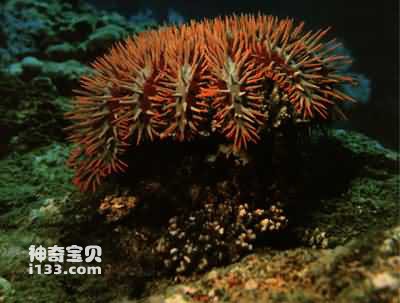
A sea urchin covered in thorns
The sea urchin is another member of the echinoderm family. It has a round, calcareous hard shell and is armed with hard spines. For the "residents" living on the seabed, it is inviolable, and no reckless guy dares to touch it.
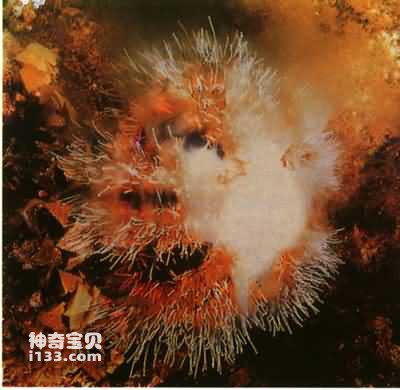
Sea urchin white spiny three-row sea urchin
In southern my country, sea urchin fishing mostly begins in late spring and early summer; in the north, Dalian purple sea urchins are collected in summer and autumn. At this time, the sea urchin contains a cavity of orange-yellow eggs, which are arranged like a five-pointed star in the hard shell. The eggs of sea urchins are a special delicacy, and the egg masses of Echinococcus glabra and purple sea urchins are valuable sea treasures. On the northern coast of my country's Shandong Peninsula, such as Longkou, Penglai, Weihai, Changdao and other places, "sea urchin sauce" made from sea urchin eggs is sold at home and abroad.
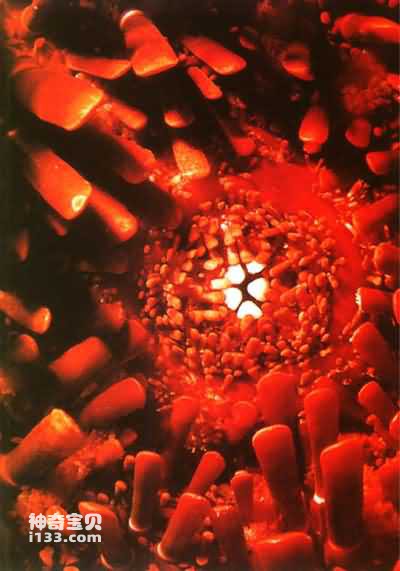
Stone pencil sea urchin
However, not all sea urchins are edible, and many species are poisonous. These sea urchins look much prettier than non-venomous sea urchins. For example, the ringed sea urchin that grows among coral reefs in the South China Sea has black and white stripes on its thick spines and yellow on its thin spines. The spines of young sea urchins are shiny with white and green ribbons, and a barb grows on the tip of the spine. Once it pierces the skin, the poisonous juice will be injected into the human body, and the spine will be broken into the skin. , causing local redness, swelling and pain on the skin, and some may even cause poisoning symptoms such as rapid heartbeat and general spasm.
Stone pencil sea urchin
The stone pen sea urchin is commonly known as the cigarette holder sea urchin. The shell is thick. The large spines are up to 7-8 centimeters long and very thick. The lower part is cylindrical and the upper end is enlarged into a club-like or triangular shape. The color is very beautiful. Living in tropical coral reef caves, it is a famous sea urchin in coral reefs. It is very common in my country's Paracel Islands and the coastal areas of Hainan Province.
Treasures of the sea - aquarium/sea-cucumbers.html">sea cucumbers
On the seabed where seaweed flourishes, there lives a cucumber-like animal. They are covered in brown or pale green coats and have many protruding thorns on their bodies. This is the "ginseng" in the sea - sea cucumber. Sea cucumbers are valuable marine treasures among echinoderms. There are more than 20 kinds of edible aquarium/sea-cucumbers.html">sea cucumbers in China Sea, some of which are expensive, such as sea cucumber, plum blossom ginseng, and black wrinkled radiata anus, etc.
Along the coasts of my country's Shandong Peninsula and Liaodong Peninsula, in bays with calm waters, on rocks 3-15 meters deep or on the seabed of fine sand, there lives a kind of sea cucumber whose back is covered with large and small cone-shaped spines. ginseng. Sea cucumber is the most valuable kind of sea cucumber. It is very afraid of heat. Whenever summer comes and the sea temperature rises, it will crawl into deep water and lie down near the rocks. It will not eat or move. It will start "aestivation" and sleep until mid-autumn before starting to move. , this sleep lasts for more than 3 months. When the air is crisp in autumn and the water temperature becomes cooler, sea cucumbers will crawl into shallow water, using their branch-like tentacles to grab the sediment on the seabed that is rich in organic matter and swallow it. Go down. The organic matter trapped in the sediment is digested and absorbed, and the indigestible sediment is excreted. It's the sea cucumber's droppings that provide clues to those who dive to catch them.
Sea cucumber is not only a delicacy on the table, but also a nutritional tonic, which has good effects on strengthening physical fitness, preventing diseases, inhibiting tumors, and prolonging life.

Sea cucumber
Lily of the sea - sea lily
Crinoids, like the familiar sea cucumbers, starfish, and sea urchins, are all echinoderms, but crinoids are the most primitive and oldest species of echinoderms. They lived in the ocean 570 million years ago.
The appearance of crinoids is very plant-like and very similar to lilies on land, so people call it crinoids.
Some types of crinoids living in the ocean are stalkless and can swim freely; some have stalks and live in the deep sea. Most crinoids are fixed to the seabed with their handles to stabilize their lives. The attached part can produce curling branches. The central part of its body is cup-shaped and has five arms. Each arm is branched again. There is a walking belt groove in the wrist, which also branches along with the branches of the wrist. There are cilia in the walking belt groove. , the cilia are constantly moving to feed on plankton.
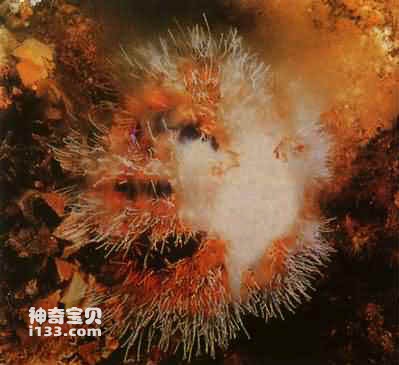
White-thorned sea urchin
There is a row of "spines" in the wrist, and the front and rear "spines" have movable joints, so these joints can bend freely.
There are 630 species of sea lilies existing in the world. In ancient times, there were quite a lot of them and they flourished in the ocean for a while. Later, most of them gradually disappeared. Common species now include sea fern, small-curled sea fern, and saw-feathered Lihai fern along the coast of Qingdao.
White-thorned sea urchin
White spines and three rows of sea urchins. Widely distributed in the Xisha Islands, Hainan Province, Guangdong Province, Taiwan Province and other waters.
snake tail
The snake tail is the branch with the largest number of members in the echinoderm family. According to statistics, there are more than 1,800 species of ophiophyte echinoderms in the world's oceans, and there are more than 100 species along the coast of my country. Because the shape and movement of their wrists resemble the tail of a snake, they are named snake tail.
There are records of snake tail in ancient Chinese books, but the ancient books do not call it snake tail, but call it "Yang Sui Zu". For example, the book "Compendium of Materia Medica" records: "Yang Sui was born in the sea with his feet, green and black in color, white belly, five legs, head and tail unknown, weak in life, and crisp in death." "The Yang Sui Foot mentioned in ancient books is the current Snake Tail. Why was it called Yang Sui Foot in ancient times? What is the meaning of the word "Yang Sui"? Further research is needed.
The wide distribution range and large number of snake tails are very amazing. They can be found everywhere from polar cold waters to tropical oceans, from muddy beaches to rocky reefs. In 1957, the "Venus" research ship of the Institute of Oceanography of the Chinese Academy of Sciences used a small net to drag benthic animals in the Bohai Bay to drag more than 6,000 A. saponii at one time. Its large number can be seen from this.
Snake tail mainly eats some organic material detritus and some small benthic organisms, such as diatoms, foraminifera, small worms and crustaceans. Its feeding organs are mainly the tentacles on the wrist and mouth.
The movement of the snake's tail is mainly accomplished by the extension and flexion of the wrist and the friction between the wrist spine and the seabed. There are two common ways of movement: one is to follow the direction of one wrist, that is, one wrist is forward and the other four wrists are backward; the other is to follow the direction of one wrist and the other three wrists are backward. , the snake's tail moves forward in the direction of the resultant force between the two wrists.
Interestingly, the wrists of snake tails are easy to break. When people collect snake tails at the beach, their wrists will be cut off if they are not careful. In fact, snake tails have strong "self-cut" and regenerative abilities, especially the wrists, which are easy to "self-cut" and regenerate. For this reason, some people call snake tails "brittle starfish". Unreasonable. The snake's tail's "self-cutting" is a clever way to defend itself against enemies. It relies on cutting off part of its arms and legs in exchange for overall survival. The lost parts will soon be regenerated, so "self-cutting" and regeneration of ophiuroids are indispensable means for their survival. They can even regenerate their body discs after damage or loss.
Snake tails are one of the important baits for precious fishes with extremely high economic value - red sea bream, large yellow croaker, flounder, etc. Especially for large yellow croaker, snake tails play a major role in its food.
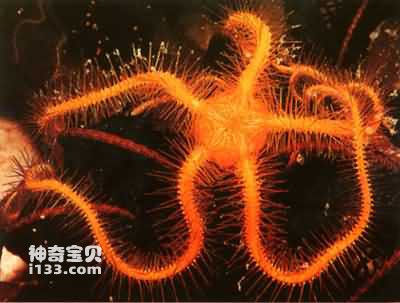
hydralisk tail
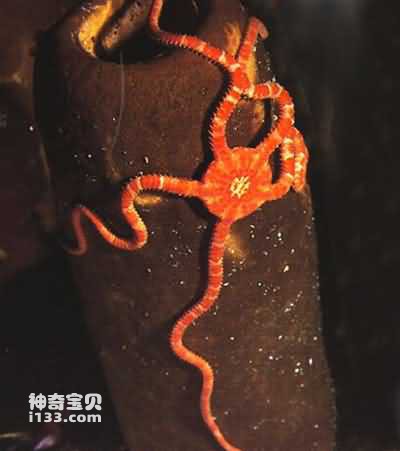
animal tags:
We created this article in conjunction with AI technology, then made sure it was fact-checked and edited by a Animals Top editor.